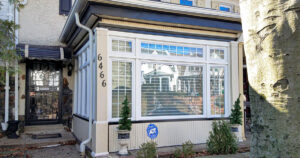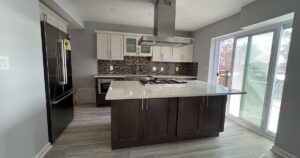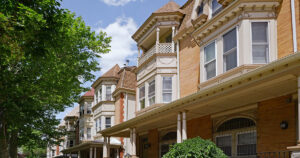One of the most important remodels within the lifespan of your home is updating your roof. Having a proper roof over your head keeps you insulated from the elements and – just as importantly – keeps your home safe from moisture. But which is better – flat versus sloped roofs?
Many homes in the Philadelphia area still have flat roofs. Most are found on older houses built between 1900 and 1950. This style of roof is largely dated and comes with some severe drawbacks.
By contrast, suburban neighborhoods often feature homes that have a sloped or pitched roof. These roofs come with shingles and sheathing that are guaranteed to keep homes protected from the elements for 20 to 30 years.
Understanding Flat and Sloped Roofing
While flat roofs may appear flat, they actually have a slight slope for drainage. They are often used on commercial buildings but can be found on older, urban housing.
Sloped roofs, by contrast, feature an angled pitch, with numerous styles such as gable, hip, and gambrel roofs. They are the traditional choice for most residential homes.
Advantages of Flat Roofs
While flat roofs on homes are a bit outdated, there are advantages to their use.
Space Maximization: In urban areas where space can be a premium, flat roofs offer accessible rooftop space that can be converted into decks, gardens, or even additional living areas. This can be especially valuable for homes with limited outdoor space or where you can earn “green tax credits” for adding plants to your home.
Easier Installation: Flat roofs typically require a less complex installation process, potentially translating into lower labor costs.
Easier Maintenance: In general, flat roofs are also easier and safer to repair. Ladders aren’t as needed, an edge curb prevents roll-off, and tools can be placed on the even surface.
Accommodates HVAC Systems: Flat roofs provide ample space for bulky HVAC units and solar panels without compromising on your home’s appearance.
The Downsides of Flat Roofs
Drainage: The design of flat roofs offers little natural drainage, which is crucial to your home’s integrity. Careful design can overcome this challenge, but it will always remain a concern to the thoughtful homeowner.
Drainage issues can lead to worse problems. Water leaking into your home is the most common issue, but alligatoring, cracks, and flashing can also be issues.
Alligatoring refers to cracks or bubbles forming on your roof due to moisture trapped below the surface.
Cracks tend to form on flat roofs because of the poorly distributed pressure, which sloped roofs manage better.
Flashing can also be a big problem for flat roofs. Many of the materials used in flat roofing, such as asphalt, ‘breathes.’ This means they change size depending on the temperature. As these materials contract and expand, moisture can get inside the building, leading to rot.
Maintenance: Flat roofs may require more frequent inspections and maintenance due to the potential for water buildup.
Limited Material Choices: Because of their simplicity, roofing materials for flat roofs may have fewer options compared to sloped roofs.
Advantages of Sloped Roofs
Sloped roofs offer several advantages, making them a popular and reliable choice.
Natural Drainage: The angled design of sloped roofs allows for efficient shedding of rain and snow, minimizing the risk of leaks.
Longer Lifespan: When properly installed and maintained, sloped roofs can generally outlast flat roofs.
Variety of Materials: Sloped roofs are compatible with a wide range of traditional and modern roofing materials, like asphalt shingles, metal, tile, and slate.
Downsides of Sloped Roofs
Higher Installation Costs: Building a sloped roof requires more materials and labor, potentially leading to higher costs compared to flat roofs.
Accessibility: Inspecting and maintaining sloped roofs might be more challenging and necessitate professional assistance.
Design Compatibility: Sloped roofs may not fit the architectural style of some modern homes.
Choosing Between Flat and Sloped: Key Factors
Home Style: Choose a roof style that complements your home’s architectural design.
Budget: Consider both initial installation costs and long-term maintenance requirements of each type.
Space Needs: If you desire additional rooftop space for outdoor living or installations, a flat roof might be more advantageous. In urban areas, flat roofs make upkeep easier by requiring less space to maintain.
Local Climate: In areas with heavy snowfall, a sloped roof might be better for efficient snow shedding.
The space conscious may find flat roofs to be a necessity, but sloped roofs tend to be more modern and durable. If you’re considering updating your flat roof or have questions about what might be right for you, we offer a free, no obligation quote. We are happy to help you understand your options.



